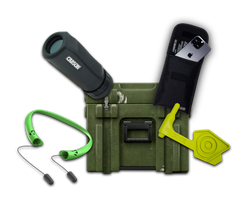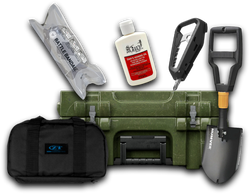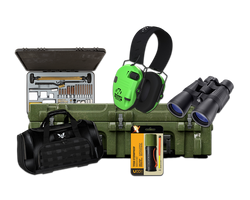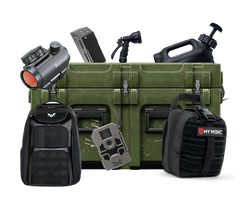Is .30 Carbine Good for Deer Hunting? A Comprehensive Guide
Table of Contents
- Introduction
- The .30 Carbine: A Brief Overview
- Assessing the Effectiveness of the .30 Carbine for Deer Hunting
- Legal Considerations
- Alternatives to the .30 Carbine for Deer Hunting
- Preparing for the Hunt with the Right Gear
- Conclusion
- FAQ
Introduction
Imagine you’re standing in a dense thicket, the air crisp and filled with the scent of pine and earth. You spot a deer grazing peacefully, and your heart races with the thrill of the hunt. The rifle slung over your shoulder is a .30 Carbine, an iconic firearm that has seen its fair share of historical significance. But the question arises: is the .30 Carbine a suitable option for deer hunting?
This question is not just a matter of preference but also one of ethics, legality, and effectiveness. As hunters, we owe it to the game we pursue to ensure clean, humane kills. The .30 Carbine has been a topic of debate among hunting enthusiasts for years, with opinions ranging from enthusiastic endorsements to outright dismissals. In this blog post, we will delve into the capabilities of the .30 Carbine, its history, performance characteristics, and the ethical considerations surrounding its use for deer hunting.
By the end of this post, you will gain a comprehensive understanding of whether the .30 Carbine is a viable option for deer hunting and how it stacks up against other firearms. We will explore its effectiveness, suitability for various hunting conditions, and the experiences of those who have used it in the field.
Prepare to embark on a detailed exploration of the .30 Carbine and its hunting potential.
The .30 Carbine: A Brief Overview
The .30 Carbine cartridge was developed during World War II for the M1 Carbine, a lightweight, semi-automatic rifle that became a favorite among U.S. troops. Its design was aimed at providing soldiers with a more manageable weapon than the standard infantry rifle while still delivering effective firepower at moderate ranges.
Historical Context
The M1 Carbine saw extensive use during the war and was popular for its ease of handling and relatively low recoil. Post-war, the .30 Carbine found its way into the hands of civilian shooters and hunters, becoming a staple in many households. However, its application in hunting contexts has sparked debate among enthusiasts.
Specifications of the .30 Carbine
The .30 Carbine cartridge typically fires a 110-grain bullet at a velocity of around 1,990 feet per second, which translates to adequate energy for small to medium game at close ranges. This performance makes it an interesting choice for hunters, though its suitability for more substantial game, such as deer, remains contentious.
Assessing the Effectiveness of the .30 Carbine for Deer Hunting
When considering the .30 Carbine for deer hunting, several factors come into play, including bullet performance, range, and shot placement. Understanding these elements is crucial in determining whether this cartridge can deliver a humane and effective kill.
Bullet Performance
The .30 Carbine uses a lighter bullet compared to traditional deer cartridges, which usually employ heavier projectiles designed for deeper penetration and more significant damage. The typical 110-grain soft point bullet can expand upon impact but may not deliver the same terminal ballistics as heavier options like the .30-30 Winchester or .308 Winchester.
Energy Transfer
Energy transfer is a critical factor in hunting; it determines how effectively a bullet can incapacitate an animal. The .30 Carbine generates about 500 foot-pounds of energy at the muzzle. While this energy level is adequate for small game, it can be marginal for deer, especially considering that ethical hunters strive for quick, humane kills.
Effective Range
The effective range of the .30 Carbine is generally considered to be within 100 yards. While this range can be suitable in many hunting scenarios, deer hunters often find themselves in situations that require longer shots due to the nature of deer movement and terrain. In these cases, the .30 Carbine may fall short compared to other options that are designed for longer distances.
Shot Placement
One of the most debated aspects of using the .30 Carbine for deer hunting is shot placement. The lighter bullet means that precision becomes paramount. A well-placed shot can achieve a clean kill, but the risk of wounding the animal increases with less-than-ideal shot placement. Many hunters argue that if you are skilled enough to consistently place your shots accurately, the .30 Carbine can be effective.
Testimonials from Hunters
Many hunters have shared their experiences with the .30 Carbine, with opinions divided. Some highlight successful hunts with clean kills, while others caution against its use for deer hunting.
-
Positive Accounts: Some hunters recount successful hunts using the .30 Carbine, emphasizing their ability to make precise shots and the cartridge's manageable recoil, which allows for quick follow-up shots if necessary.
-
Cautionary Tales: Conversely, others stress that the .30 Carbine is underpowered for deer hunting, advocating for more substantial calibers for ethical reasons. They argue that the chances of wounding an animal increase significantly with a cartridge that lacks the stopping power needed for a quick, humane kill.
Legal Considerations
Before heading into the field with a .30 Carbine for deer hunting, it's crucial to check local regulations. Many states have specific laws regarding the calibers and types of firearms permitted for big game hunting.
State Regulations
In some states, the .30 Carbine may be illegal for deer hunting due to its caliber and energy specifications. Understanding the laws in your area ensures compliance and promotes ethical hunting practices. Always verify the requirements before planning your hunt.
Alternatives to the .30 Carbine for Deer Hunting
If you find that the .30 Carbine may not be the best choice for deer hunting, plenty of alternatives offer better performance for this purpose.
.30-30 Winchester
The .30-30 Winchester is a classic deer cartridge known for its effectiveness in the field. Firing heavier bullets (typically 150 to 170 grains), it offers better energy transfer and penetration compared to the .30 Carbine, making it a favorite among deer hunters.
.308 Winchester
The .308 Winchester is another popular choice for deer hunting, known for its versatility and effectiveness at various ranges. It can deliver substantial energy and is suitable for larger game, making it an excellent option for both new and experienced hunters.
.243 Winchester
For those who prefer a lighter recoil, the .243 Winchester provides a good balance of performance and manageability. It is suitable for deer hunting and offers a flatter trajectory, making it easier to shoot accurately at longer distances.
Lever Action and Bolt Action Options
Lever-action and bolt-action rifles chambered in suitable calibers can provide hunters with the reliability and accuracy needed for successful deer hunting. These firearms typically offer better performance than the .30 Carbine and are widely accepted in various hunting scenarios.
Preparing for the Hunt with the Right Gear
Regardless of the caliber you choose, having the right tactical gear is essential for a successful hunting experience. This is where Crate Club can assist you in being well-prepared.
Essential Gear for Deer Hunting
-
Optics: Quality scopes or binoculars can significantly enhance your hunting experience, allowing you to spot game from afar and make precise shots.
-
Backpacks: A durable, organized pack is essential for carrying your gear, supplies, and any harvested game. Crate Club offers a variety of tactical backpacks suited for hunting.
-
Clothing: Weather-appropriate, camouflaged clothing is essential for blending into the environment and staying comfortable during long hours in the field.
-
First Aid Kits: Accidents can happen, and having a well-stocked first aid kit ensures you’re prepared for emergencies.
-
Survival Tools: Crate Club provides a selection of survival tools that can be beneficial in the field, ensuring you're equipped to handle any situation.
Explore Crate Club’s subscription services to discover curated gear that suits your hunting needs. For a comprehensive selection, check out the Crate Club Shop.
Conclusion
In conclusion, the question of whether the .30 Carbine is good for deer hunting is multifaceted. While it has historical significance and can be effective in the hands of skilled marksmen, its limitations in power and range make it a less-than-ideal choice for many hunters. Ethical hunting practices dictate that we should prioritize humane kills, and the .30 Carbine may not always meet those standards.
Hunters must consider their skill level, local regulations, and the specific conditions of their hunting environment when choosing their firearms. For those seeking alternatives, options such as the .30-30 Winchester or .308 Winchester offer superior performance for deer hunting.
As you prepare for your next hunting adventure, equip yourself with the right gear and knowledge. Embrace the spirit of the hunt and ensure that your experiences reflect respect for the animals and the environment. Whether you choose to use a .30 Carbine or another caliber, remain committed to ethical hunting and the traditions that bind us as outdoor enthusiasts.
FAQ
Can a .30 Carbine kill a deer?
Yes, a .30 Carbine can kill a deer, but it may not be the most effective choice. The cartridge is capable of delivering lethal force, but its lighter bullet and lower energy levels may not ensure a quick, humane kill.
What is the effective range of a .30 Carbine for hunting?
The effective range of a .30 Carbine is generally considered to be within 100 yards. Beyond this distance, the chances of accurate shot placement and effective energy transfer diminish.
Are there legal restrictions on using a .30 Carbine for deer hunting?
Yes, many states have specific regulations regarding the calibers allowed for deer hunting. Check local laws to ensure compliance before hunting with a .30 Carbine.
What are better alternatives to the .30 Carbine for deer hunting?
Alternatives such as the .30-30 Winchester, .308 Winchester, and .243 Winchester offer better performance and energy transfer for deer hunting. These cartridges are widely accepted and favored by many hunters.
Where can I find quality tactical gear for hunting?
Crate Club offers a subscription service that provides curated tactical gear, survival tools, and hunting equipment. You can explore their offerings at the Crate Club Shop.
分享这篇文章



